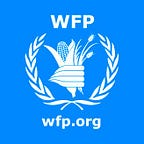9 Facts on WFP’s response in Iran amidst COVID-19
Here are 9 facts that shed light on the food security situation in Iran especially for the Iraqi and Afghan refugees during the COVID-19 outbreak.
Published in
2 min readApr 6, 2020
- Iran is one of the hardest-hit countries by the COVID-19 pandemic. (source: WHO)
- As of 6 April, the virus has claimed more than 3700 lives and infected more than 60,000 people including a number of senior officials in the country. (source: WHO)
- As part of its response to COVID-19 in Iran, WFP is purchasing a three-month supply of Personal Protection Equipment (PPE) for more than 5,000 staff and volunteers from the Iranian Red Crescent Society who are responsible for screening people at city entry points. PPEs include surgical masks, N95 masks and coverall gowns that will be airlifted into Iran from the United Nations Humanitarian Response Depot in Dubai.
- WFP is supporting 31,000 Afghan and Iraqi refugees living in settlements across the country. Refugees will receive cash and food assistance to ensure that their food needs are maintained at an acceptable level during the outbreak of coronavirus.
- In March 2019 and January 2020, heavy flooding hit large parts of Iran affecting 25 of Iran’s 31 provinces. This is probably the worst damage from flooding in the country in more than 50 years. Following these major floods, the Government of Iran called upon WFP to support flood response efforts in affected provinces. WFP distributed more than 20,000 family emergency food packages to flood-affected people.
- Since 1987, WFP has been providing assistance to refugees in Iran since the arrival of the first asylum seekers from Afghanistan and Iraq.
- Iran generously hosts one million refugees — the sixth largest refugee population in the world — for over 30 years.
- It costs WFP US$$0.32 a day to provide food for a refugee living in settlements in Iran.
- WFP’s first-ever emergency operation was in response to the devastating 1962 Iran earthquake centered near Boin Zahra.
